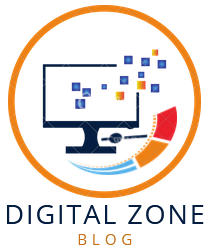As businesses increasingly adopt Kubernetes in hybrid cloud environments, maintaining effective observability becomes crucial. Observability ensures that you have a clear understanding of how your applications are performing, how they’re interacting with each other, and if there are any underlying issues that need addressing. In this article, we’ll delve into ten powerful strategies to achieve robust Kubernetes observability in the context of hybrid cloud setups.
Introduction
In modern IT landscapes, Kubernetes has emerged as a go-to solution for orchestrating and managing containerized applications. However, as the complexity of these environments grows, the ability to observe and understand what’s happening within them becomes paramount.
Understanding Kubernetes Observability
Observability goes beyond simple monitoring. It’s about having the ability to gain insights into your system’s internal states through its external outputs. In the context of Kubernetes, observability involves closely monitoring various components like pods, services, and nodes to ensure everything is operating smoothly.

Challenges in Hybrid Cloud Observability
Hybrid cloud setups, which combine on-premises infrastructure with cloud resources, introduce unique challenges to observability. Maintaining a consistent and comprehensive observability strategy across these diverse environments requires careful consideration.
Strategy 1: Comprehensive Logging Practices
Logging is the backbone of Kubernetes Observability. By collecting and analyzing logs from different parts of your application, you can quickly pinpoint issues and troubleshoot them effectively. Adopting a centralized logging approach streamlines log management, making it easier to search, analyze, and correlate logs for faster issue resolution.
Strategy 2: Leveraging Distributed Tracing
Distributed tracing is a powerful technique that allows you to follow the path of requests as they move through various services in your application. This insight is invaluable for identifying bottlenecks, understanding latency issues, and optimizing the performance of your system.
Strategy 3: Implementing Real-time Metrics Monitoring
Real-time metrics monitoring provides instant visibility into the health of your Kubernetes cluster. Monitoring metrics such as CPU usage, memory utilization, network traffic, and application-specific key performance indicators (KPIs) allows you to detect anomalies and take proactive measures before they escalate into larger problems.
Strategy 4: Utilizing AIOps and Machine Learning
The use of Artificial Intelligence for IT Operations (AIOps) and machine learning can significantly enhance observability efforts. These technologies can automatically detect patterns, anomalies, and potential issues in real-time, enabling faster incident response and reducing manual intervention.
Strategy 5: Embracing Service Meshes
Service meshes like Istio and Linkerd are designed to simplify communication between microservices within Kubernetes clusters. They offer features like traffic management, security policies, and load balancing, all of which contribute to better observability by providing insights into how microservices interact and communicate.
Strategy 6: Proactive Security Monitoring
Observability isn’t solely about performance; it’s also about security. Implementing observability practices with a focus on security helps you quickly identify and respond to unauthorized access attempts, potential breaches, and vulnerabilities, ensuring the safety of your applications and data.
Strategy 7: Effective Resource Utilization Monitoring
Optimizing resource usage is essential for efficient operations and cost management. Regularly monitoring resource utilization patterns allows you to identify over- or under-utilized resources, enabling you to make informed decisions about scaling and allocation.
Strategy 8: Centralized Monitoring and Visualization
Consolidating observability data into a single platform simplifies monitoring and troubleshooting. Visualization tools such as Grafana and Prometheus help transform complex data into comprehensible visualizations, aiding in identifying trends and anomalies.
Strategy 9: Seamless Integration with DevOps
Observability should be integrated into your DevOps practices. By incorporating observability tools and practices into your continuous integration and continuous delivery (CI/CD) pipelines, you can identify and address issues early in the development process, reducing the chances of problems reaching production.
Strategy 10: Continuous Improvement and Optimization
Observability is not a one-time effort but an ongoing process. As your hybrid cloud environment evolves, your observability strategies, tools, and processes should also evolve. Regularly assess and refine your approach to ensure it remains effective in the dynamic landscape of hybrid cloud Kubernetes environments.
Conclusion
In the realm of hybrid cloud environments, effective Kubernetes observability is a must. By implementing these ten strategies, you’ll be better equipped to monitor, troubleshoot, and optimize your applications, ultimately ensuring smooth operations and a positive user experience.
Frequently Asked Questions
- Why is Kubernetes Observability important in hybrid cloud Kubernetes setups? Observability provides insights into how applications are performing in complex environments, aiding in troubleshooting and maintaining their health.
- What are the key challenges in achieving observability in hybrid cloud settings? Challenges include integrating data from diverse sources, maintaining uniform monitoring standards, and addressing security concerns.
- How does distributed tracing enhance Kubernetes Observability? Distributed tracing allows you to track the flow of requests across services, aiding in identifying performance bottlenecks and enhancing overall system efficiency.
- Can Kubernetes Observability practices be automated? Yes, leveraging AIOps and machine learning can automate the detection of anomalies and potential issues, expediting incident response.
- Is Kubernetes Observability a one-time setup? No, observability requires continuous refinement. The dynamic nature of hybrid cloud environments demands ongoing adjustments to strategies and tools.
